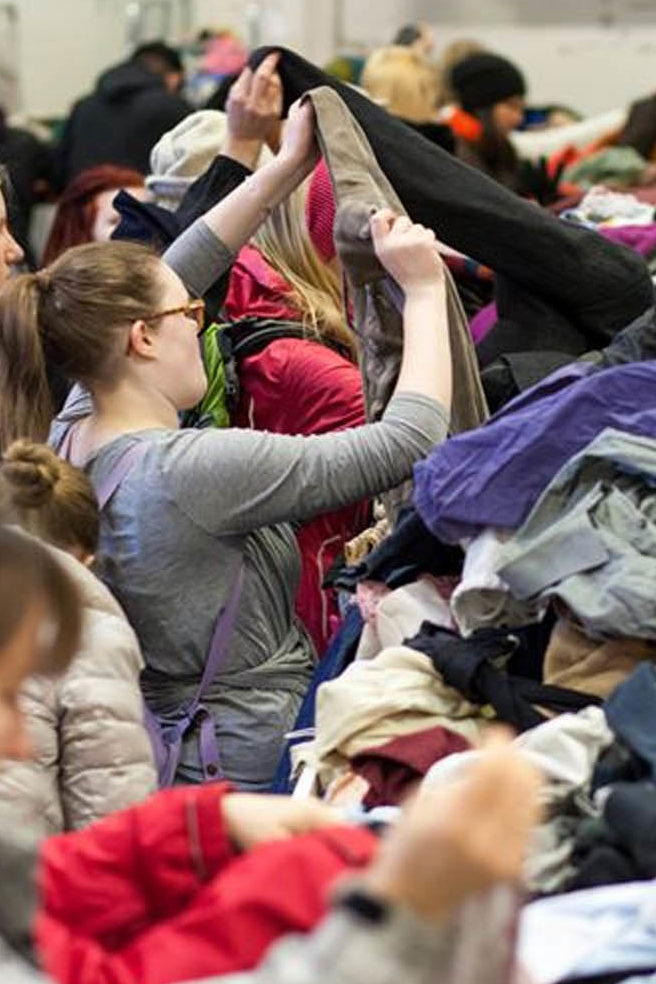
Recycled textile is obtained from recovering and recycling worn clothing and waste fiber materials. Textile recycling involves the reuse or reprocessing of used clothing, fibrous material, and leftovers of manufacture. The majority of recyclable textiles are derived from municipal waste, such as waste or worn-out garments, carpets, furniture, tires, footwear, and non-durable items such as sheets and towels. Recycling entails the transformation of worn clothing and materials into new products.
Environmental and economic benefits of recycled textiles include a reduction in the demand for virgin materials such as wool and cotton, pollution, and water and energy use. Utilizing existing fibers and textiles reduces the demand for newly manufactured fibers. This reduces pollution by conserving water, power, colors, and chemicals. Through recycling, businesses can increase their profits by avoiding the costs of dumping in landfills while simultaneously contributing to the value and quality of the environment, jobs for marginally employable laborers, charitable donations and disaster relief, and the transport of used clothing to regions of the world in need.
The rise of the global recycled textile market is driven by an increase in recycling operations and an increase in demand from various industries, such as the retail sector, the automotive industry, and the building and construction industry. The relatively low price of recycled materials compared to the price of new products is also projected to contribute to the rise of the recycled textile sector. However, the rise of the global recycled textiles market is predicted to be limited by growing processing costs and insufficient employment possibilities. During this time, it is estimated that the development of recycling technologies would afford the recycled textile business lucrative expansion opportunities.
Minimal CO2 Emissions, Less Water & Energy Consumption, and Awareness amongst Population Propels the Recycled Textile Market
The textile industry is extraordinarily energy- and resource-intensive. There is an increase in the global demand for textiles, resulting in a rise in the consumption of drinkable water, energy, and CO2 emissions. According to Textile Recycling Technologies, Coloring, and Finishing Methods, potable water use will increase by 50% by 2030. It is expected that CO2 emissions will grow by 60% by 2030. Industrial and post-consumer textile waste is reused, burnt, recycled, or dumped into landfills. Recycled textile waste remains in the textile flow system, but burned textile waste produces CO2 emissions. The greater the amount of textile waste reprocessed and recycled, the less will be left for combustion, resulting in a substantial reduction in CO2 emissions.
The regenerated fabric does not necessitate a lengthy dyeing and chemical modification procedure, reducing CO2 emissions. Recycling aids in the expansion of the global recycled textile market since it cuts CO2 emissions. In addition, textile waste designated for recycling ends up in landfills, where it may take 300 to 500 years to decompose, contaminating the soil. Reusing textile remnants reduces soil pollution. Additionally, recycled textiles use less water and energy for subsequent treatment procedures when used to create new products, which raises the demand for recycled textiles and drives the expansion of the worldwide recycled textile market.
As a result of government and non-profit initiatives, consumer awareness of the recycling of textile items has increased. Increasing awareness has consequently led to a significant increase in the donation and collection of waste textiles, which encourages the growth of the global recycled textile sector. Utilizing recycled textiles offers various cost savings to the manufacturer. Recycled textiles are considerably more affordable than virgin fabrics. In addition, virgin materials are not always readily available, which delays the production process and affects the total manufacturing cost; therefore, it is desirable to switch to recycled textiles. Moreover, recycled fabrics such as wool, cotton, and polyester require less and simpler processing, which increases the demand for recycled textiles.
The full report is available online at straitsresearch.com/buy-now/recycled-textile-market
 TEXTILES.ORG
TEXTILES.ORG


